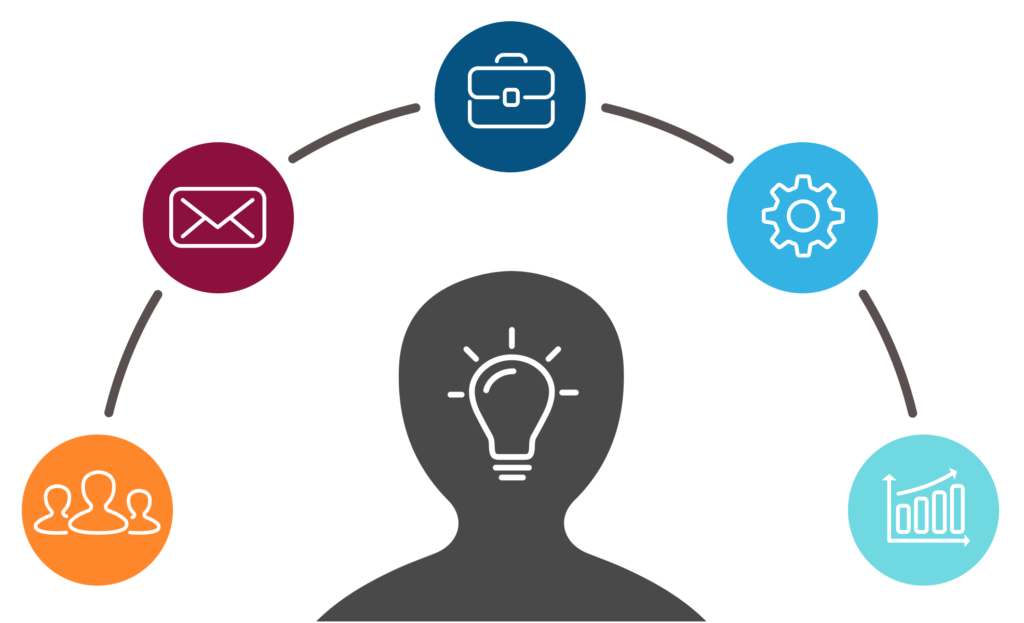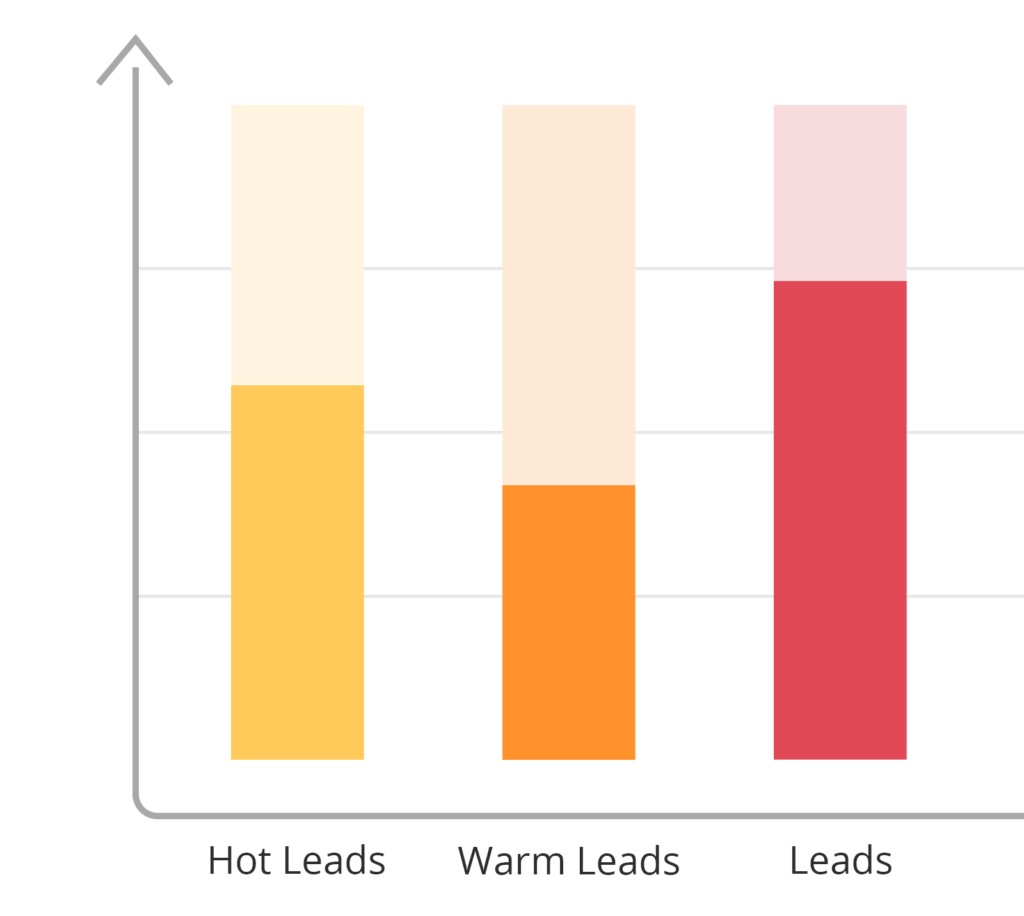Lead scoring is the marketing process whereby a numerical score is attributed to leads based on various factors and behaviours. Essentially, it functions as a way to qualify leads and highlight priorities.
The problem with this ‘sales ready’ approach is that it can be challenging for marketers to interpret the data in a way that is both consistent and accurate in a reasonable amount of time. Even if sales and marketing teams work on defining a strategy to score leads, it’s easy for assumptions to get in the way of generating a score that everyone can agree on.
Predictive Lead Scoring does all the hard work for you…
Predictive Analytics leverages Machine Learning to provide your sales and marketing team with in-depth customer knowledge and ways to target the hottest and most qualified leads – resulting in saved time and higher revenue streams.
In this guide we explore using artificial intelligence (AI) and machine learning for predictive lead scoring, which leverages both historical data as well as predictive intelligence to calculate a more informed score on who is likely to buy in the future.

How can machine learning assist the sales cycle?
Machine learning allows you to ‘train’ algorithms to make accurate predictions about new customers or current but unknown customers using verified customer data. A machine-learning algorithm runs through a database of customer data and establishes trends, recognized patterns and builds a model from the data, in order to create a prediction model.
Applying the prediction model to new data sets will enable B2B sales teams to benefit from automatic alerts to the propensity of a customer purchasing a given product. At this point, they can decide to make unique offers to that customer to encourage sales.
It’s not just about knowing when to offer incentives or discounts. The B2B sales process, particularly for businesses whose product is low volume and high margin, is often highly consultative and involves tailoring the solution to each client. Invariably, it takes large amounts of time to properly follow up on a lead, and if these leads are unlikely to purchase, lots of time and money could be wasted. By applying accurate propensity models to establish which leads are the most likely to purchase, you can focus your sales team’s time on those prospects.
What is model scoring in machine learning?
Model scoring in machine learning is basically a way for a conclusion to be drawn on a subject based on known information.
For example, if risk assessing a social gathering, various multiple-choice questions might be asked such as ‘how many attending?’ followed by different quantities of people you would select such as ’10-20,’ 20-40,’ ‘above 40’ and so on. These would have a score (the lower the attendance the lower the score) that would be used to determine the outcome along with scores from other questions asked such as: ‘is it a street party?’ ‘Is alcohol being served?’ and ‘what type of event is it?’ Individual scores are added up and a conclusion drawn. In this example, a small garden gathering with less than 20 people with no alcohol being served might be shown as ‘low risk’ since the individual parameters are all low score so low risk.
How much data is required?
To be effective, machine learning for predictive analytics requires reasonable amounts of historical data. Without large numbers of test cases, it may be that peripheral factors could have a major outcome of the results. The machine-learning algorithm can only work with the historical data it has, if your data set is too small or inaccurate it may be inferring propensity from non-relevant events. For example … if you had a small set of data on customers who bought a certain product, and one customer mistakenly bought that product when they intended to buy another, the model would extrapolate that propensity to buy and apply it to future customers. In reality these customers would not hold that propensity. Which means to get the most accurate predictions, you need a large data set in order to allow the machine learning algorithm to recognize what the underlying trends in the data are, and what is just noise in the data.

Steps in the machine learning process…
Once the problem is defined, in this case successful lead scoring, data mining is undertaken to discover the patterns in the large data set.
A training data set is compiled often based on expert knowledge where the labels or scores of these customers are reliably known. The algorithm is applied to this data set in which a number of descriptive features relate to a target feature and a prediction model is created.
This prediction model can then be fed practical query instances (e.g. is this customer likely to convert) and make predictions. These predictions can then influence business strategy.
These may be done manually or programmatically, depending on the way your businesses systems are configured.
In summary
AI techniques represent the next step in the marketing evolution, which will allow sales and marketing teams to target their very best leads in the most efficient manner. AI is not just about automating the sales function, it’s about freeing up your workforce to use their time to convert leads to customers.
By using machine learning you can build an accurate prediction model which allows you to score leads for your sales team and target offers at the right customers where they will be most effective. This is predictive lead scoring, in a nutshell.
Get in contact if you have any questions, or feel this may be of interest to you and your business.
